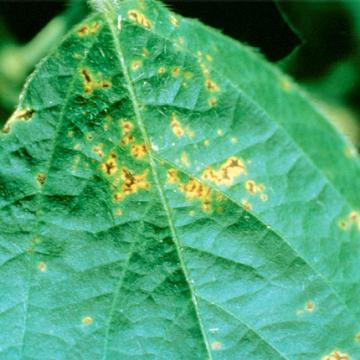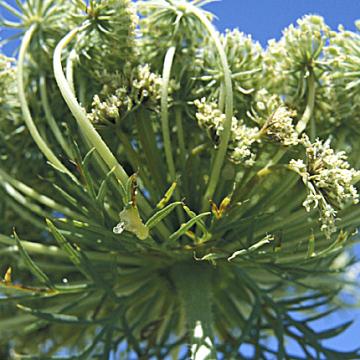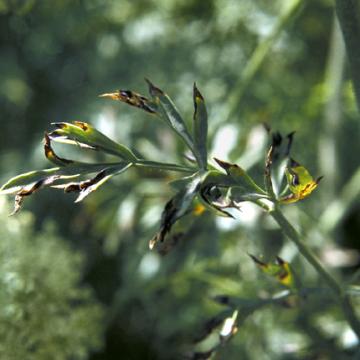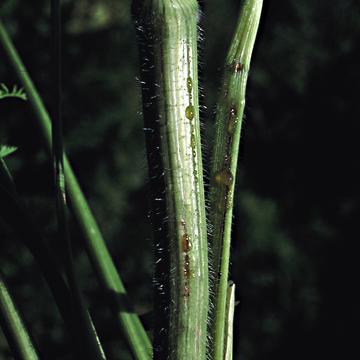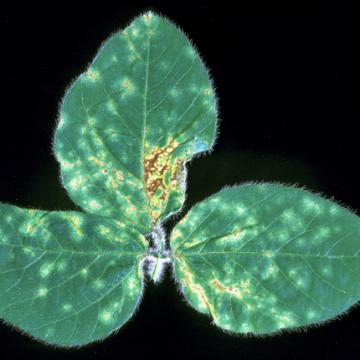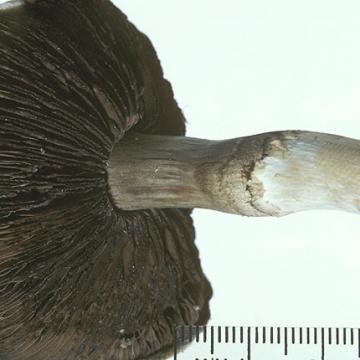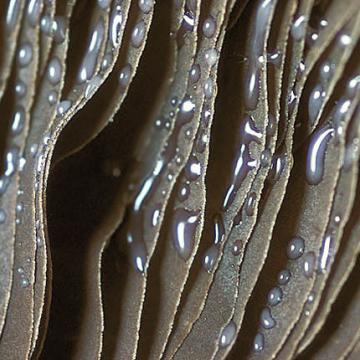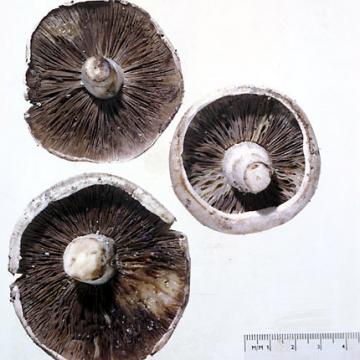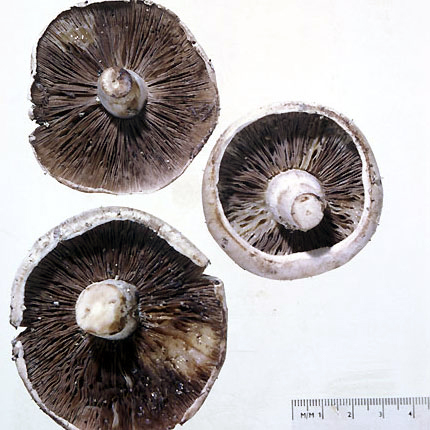DISEASE: Bacterial blight
HOST: Soybean
Leaves with yellowish brown necrotic lesions. Lesions also may be yellow to light brown and bordered by yellowish green halos. Lesions occur on stems, petioles, and pods.
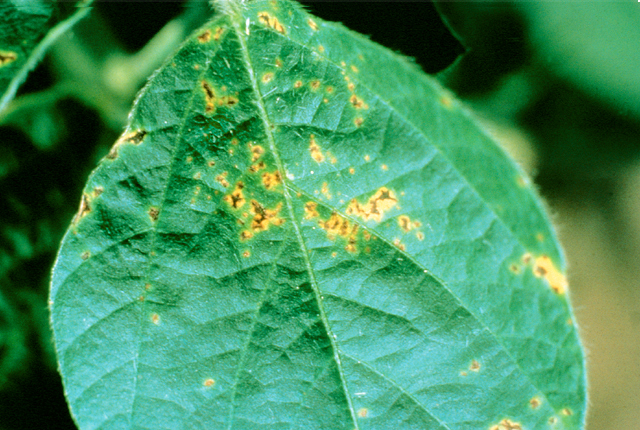
Bacterial blight | Soybean
DISEASE: Bacterial blight
HOST: Soybean (Glycine max)
PATHOGEN: Pseudomonas syringae pv. glycinea
SOURCE: J. B. Sinclair
DISEASE: Bacterial leaf blight
HOST: Carrot
Blight of flower parts.
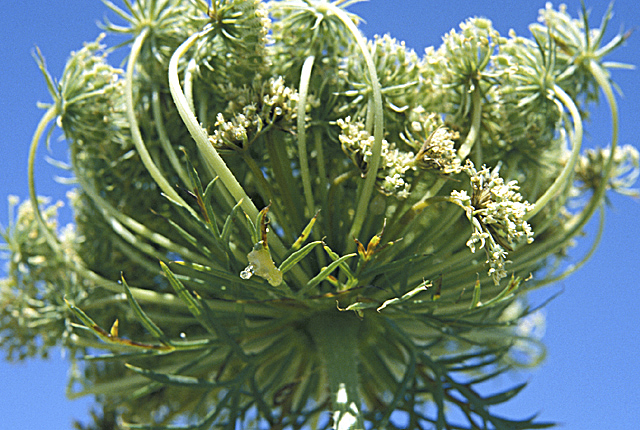
Bacterial leaf blight | Carrot
DISEASE: Bacterial leaf blight
HOST: Carrot (Daucus carota)
PATHOGEN: Xanthomonas hortorum pv. carotae
PATHOGEN SYNONYM: Xanthomonas campestris pv. carotae
SOURCE: N. Schaad
DISEASE: Bacterial leaf blight
HOST: Carrot
Leaf lesions begin as water-soaked spots that progress to small, yellow, angular spots and later expand to necrotic lesions with yellow halos.
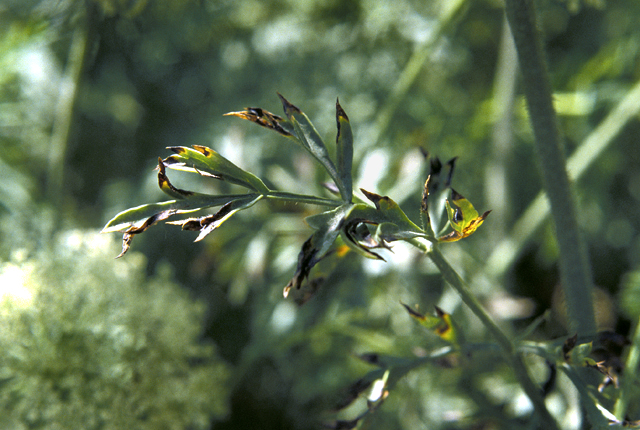
Bacterial leaf blight | Carrot
DISEASE: Bacterial leaf blight
HOST: Carrot (Daucus carota)
PATHOGEN: Xanthomonas hortorum pv. carotae
PATHOGEN SYNONYM: Xanthomonas campestris pv. carotae
SOURCE: N. Schaad
DISEASE: Bacterial leaf blight
HOST: Carrot
Bacterial ooze on flower stalk from systemic invasion of the pathogen.
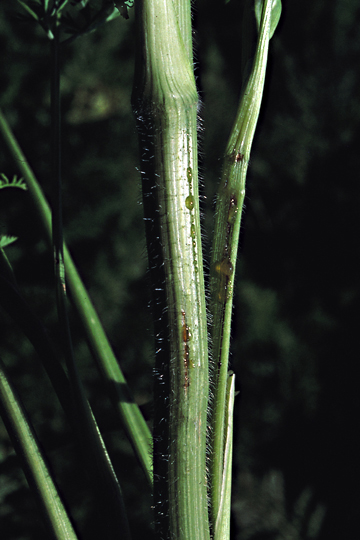
Bacterial leaf blight | Carrot
DISEASE: Bacterial leaf blight
HOST: Carrot (Daucus carota)
PATHOGEN: Xanthomonas hortorum pv. carotae
PATHOGEN SYNONYM: Xanthomonas campestris pv. carotae
SOURCE: APS
DISEASE: Bacterial leaf spot
HOST: Soybean
Early symptoms of bacterial blight.
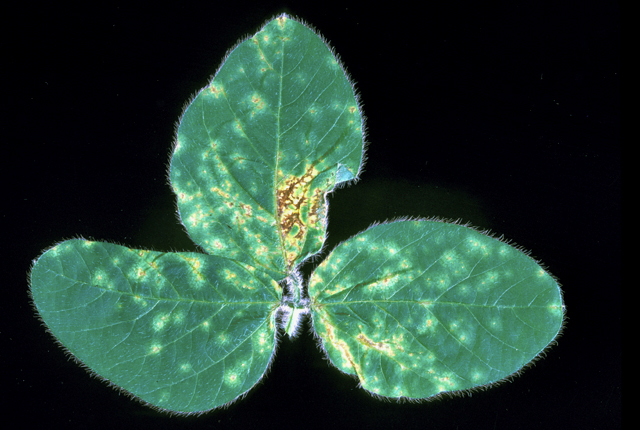
Bacterial leaf spot | Soybean
DISEASE: Bacterial leaf spot
HOST: Soybean (Glycine max)
PATHOGEN: Pseudomonas syringae pv. glycinea
SOURCE: D. Cupples
DISEASE: Drippy gill
HOST: Mushroom
Drippy gill is characterized by small dark spots on gills with drops of bacterial ooze at the centers. Severe infection results in slimy areas and collapse of gills.
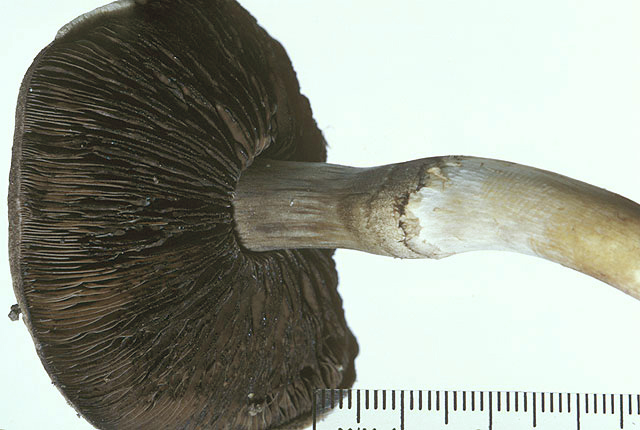
Drippy gill | Mushroom
DISEASE: Drippy gill
HOST: Mushroom (Agaricus campestris)
PATHOGEN: Pseudomonas agarici
SOURCE: J. Young
DISEASE: Drippy gill
HOST: Mushroom
Close-up of infected gills with bacterial ooze.
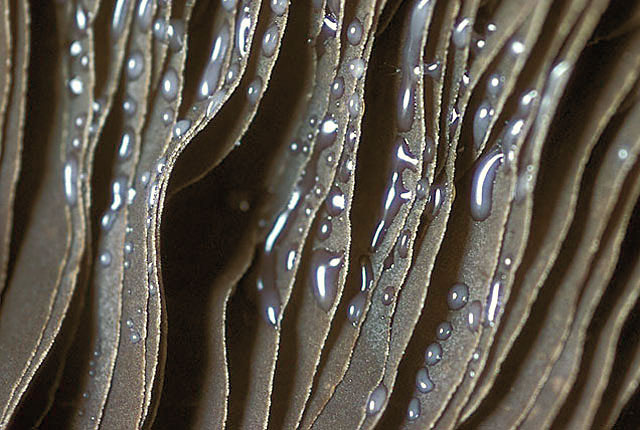
Drippy gill | Mushroom
DISEASE: Drippy gill
HOST: Mushroom (Agaricus campestris)
PATHOGEN: Pseudomonas agarici
SOURCE: J. Young


